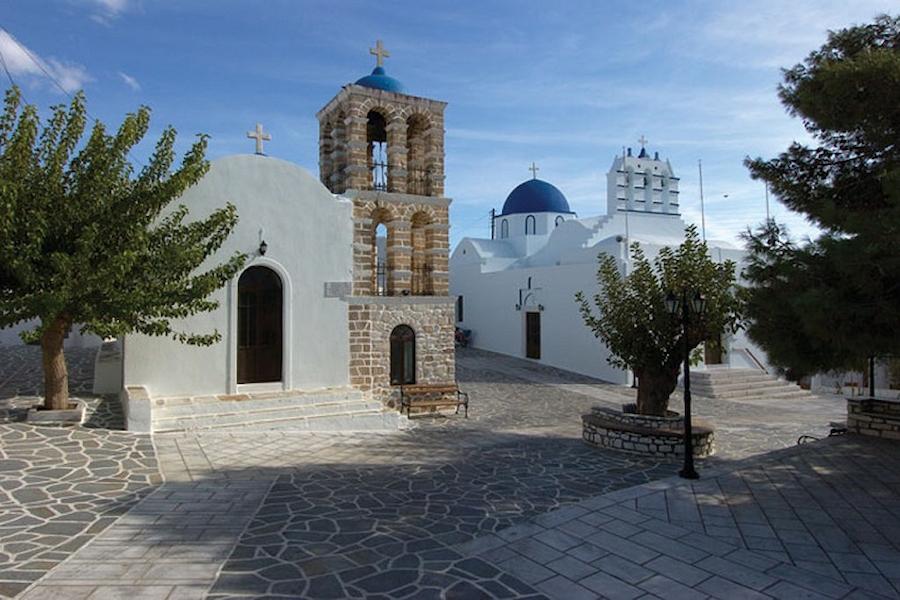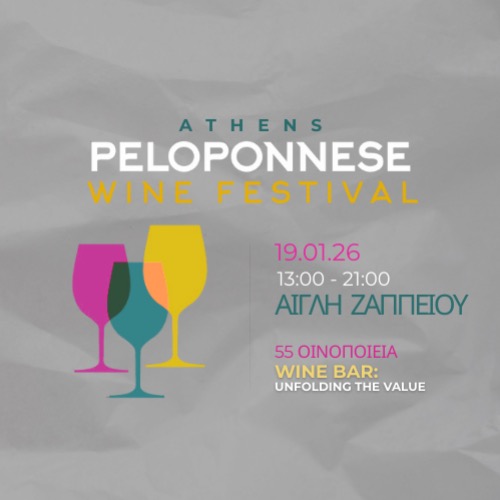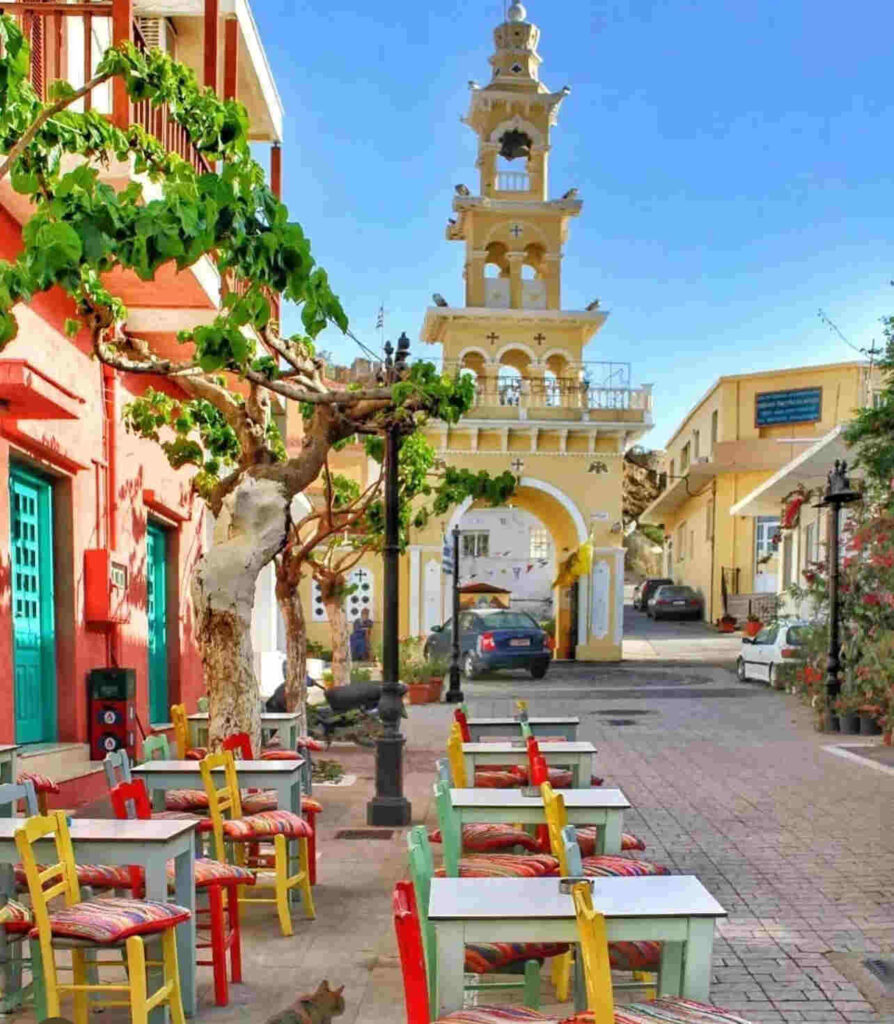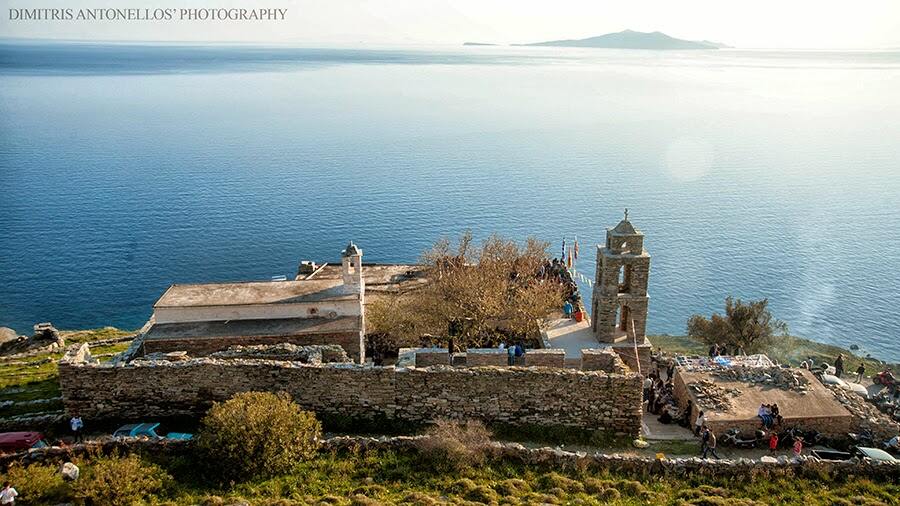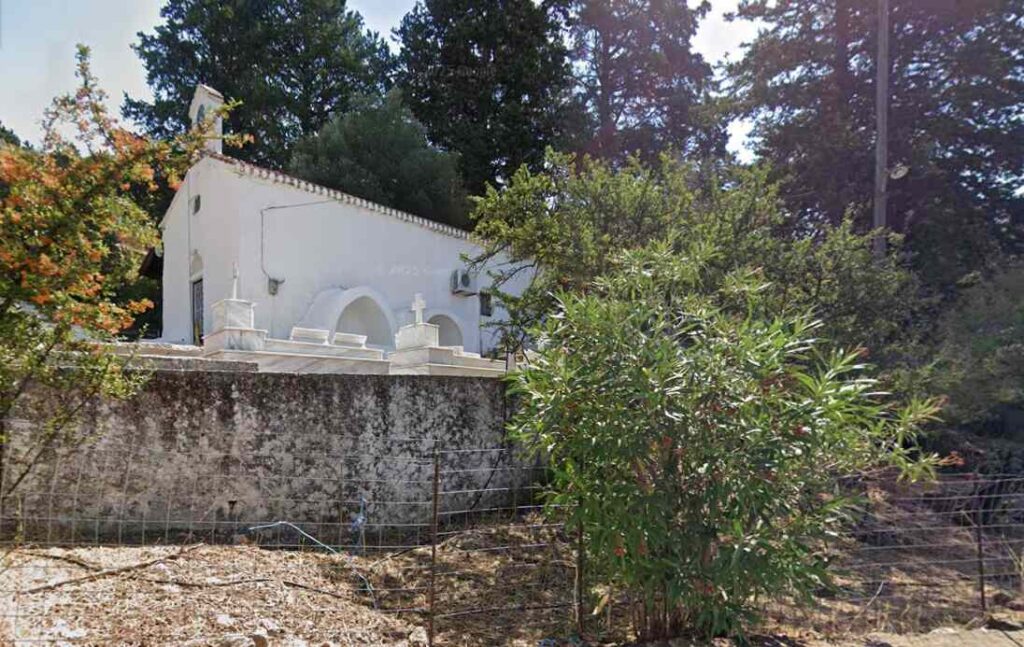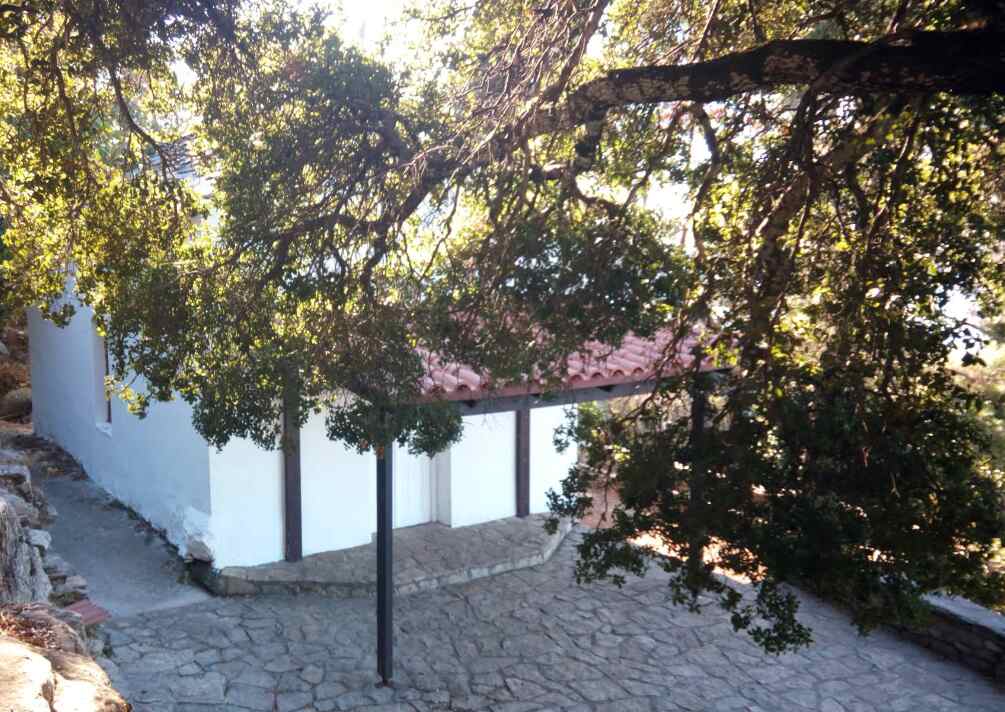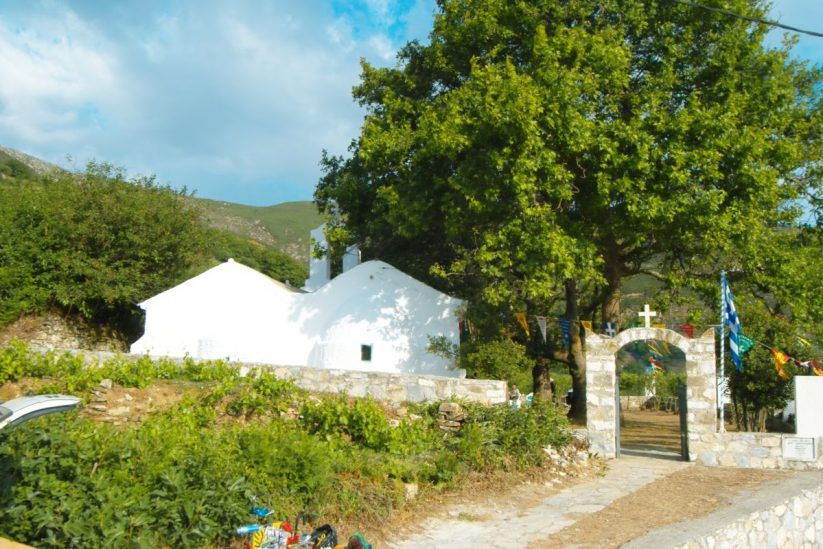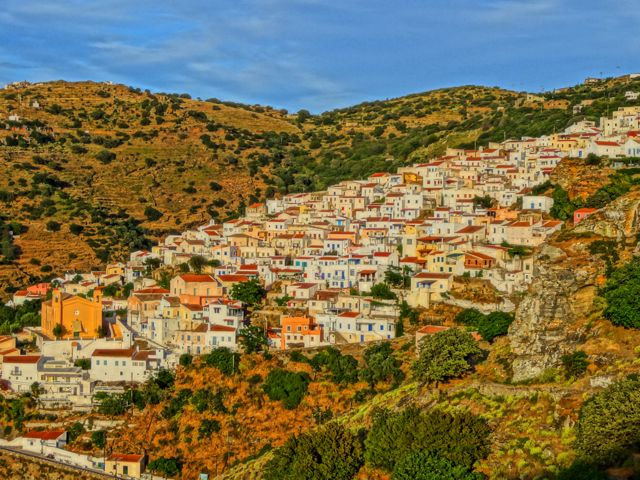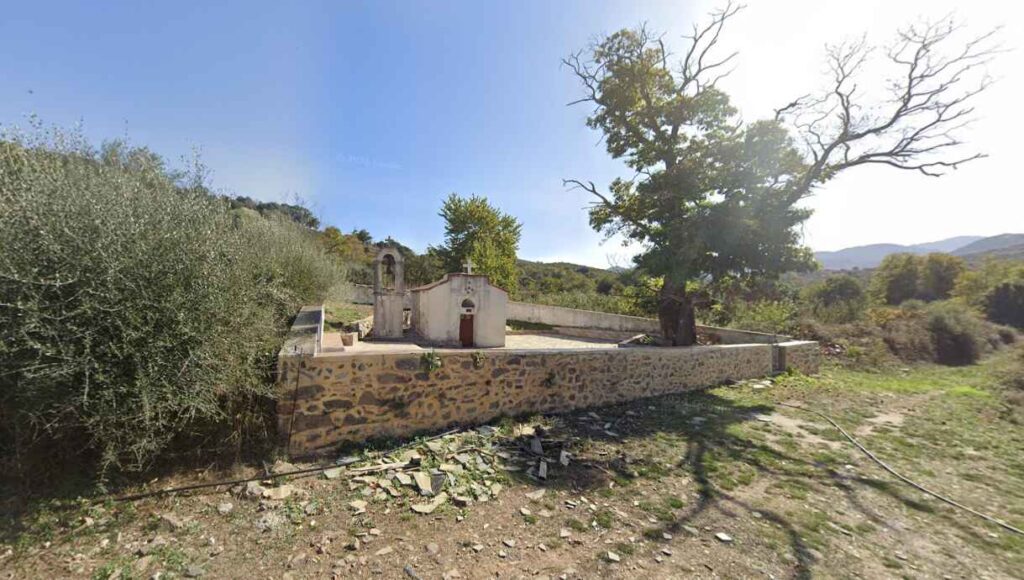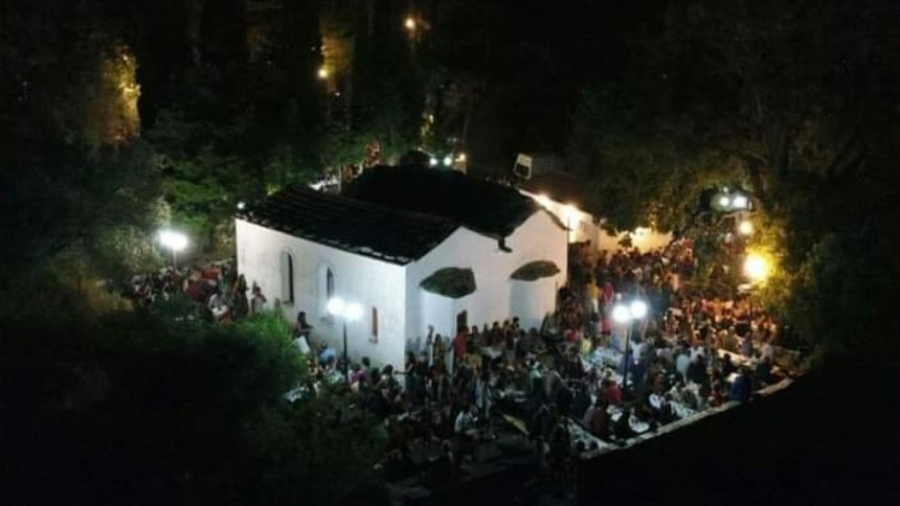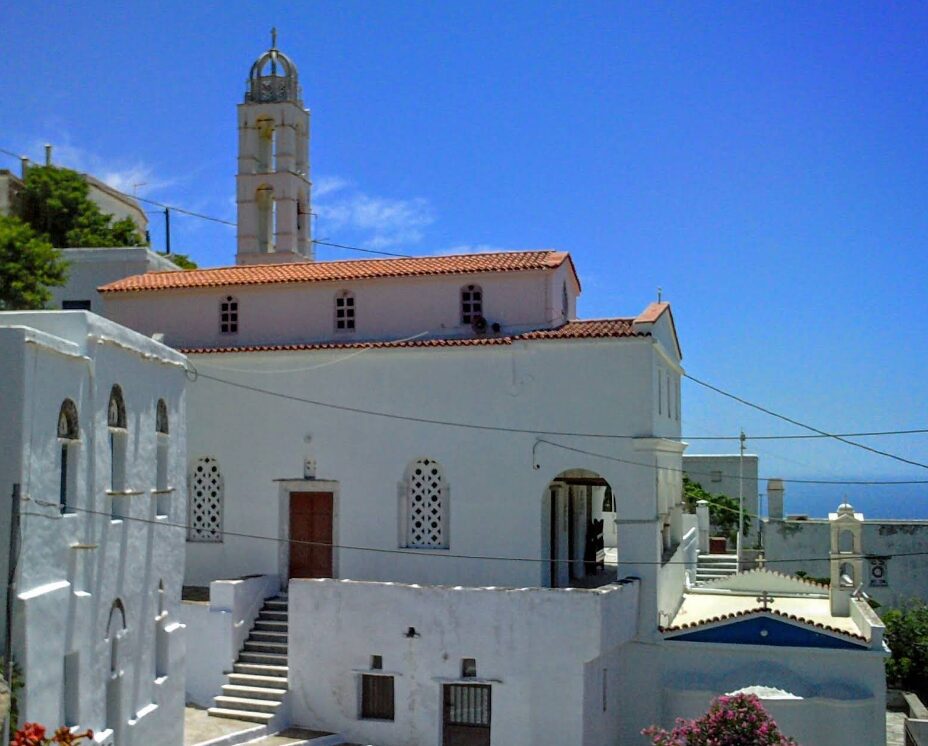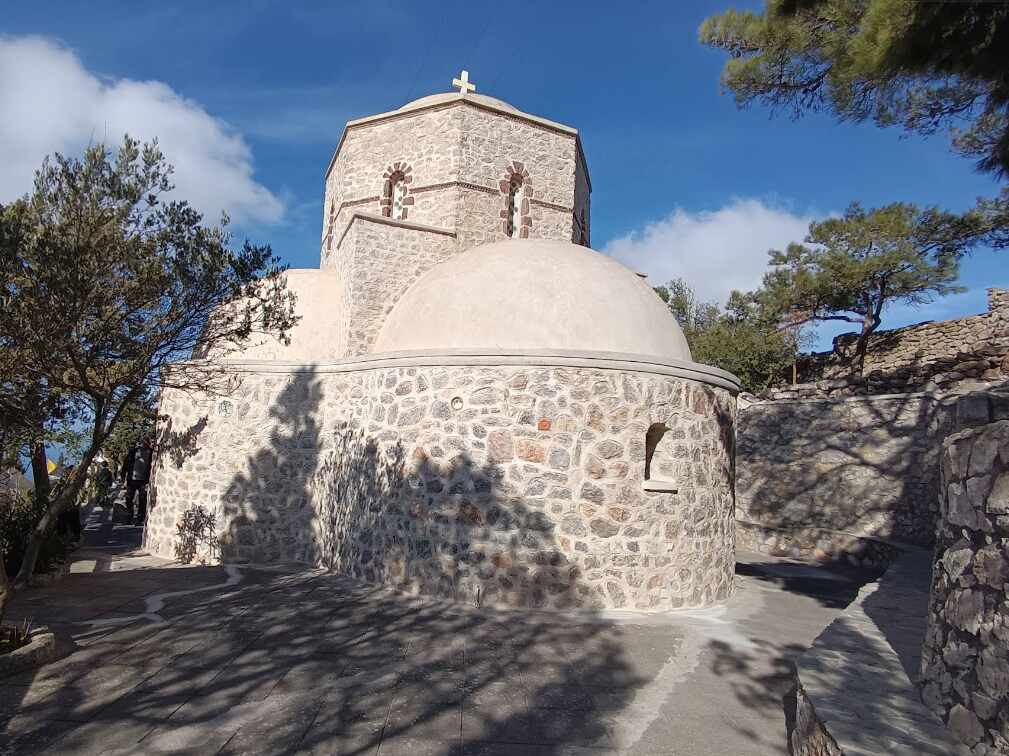The village of Kostos, one of the “balconies” of Paros, lays on the eastern slope of a mountain, 7 km from the main town of Parikia, at an altitude of 160m, just below the famed Paros marble quarries. It is a small, picturesque village with small white-washed houses, churches and narrow lanes. Among the village’s houses is one that belonged to the great “Teacher of the Greek Nation”, St. Athanasios the Parian (1721-1813), a prominent figure of 18th-century monasticism.
Agia (Santa) Marina’s church dates back to the 17th century and is decorated by a magnificent stone bell tower having been built much later. The festival of the church is held on July 16 and 17 with live music and a bazaar. The seafood and other meze are wonderful and the wine flows liberally. All residents as well as numerous visitors participate with religious solemnity to the festivals of Paros, attending vespers and, following the divine liturgy, contribute in their own way to the feast. Some bring the traditional alcoholic beverage, souma, or wine while others bring pies, revithada, or other delicacies they have prepared before at home and the festival culminates with feasting, dancing and singing that goes on for many hours.
The most famous Parian dishes are the kakavia, gouna (salted sun-dried fish), salatouri, kolokythokeftedes, tomatokeftedes, chickpeas in the oven, ambelofassoula, fava, karavoli, kalfa with skordalia. The cheeses are also exceptional. Xynomizithra, ladotiri, brine cheese, touloumisio and mizithra, combined with paximadi, and kritharokouloures. Housewives make spoon sweet, rafiolia, mizithropitakia, lambrokouloura, lazarakia, petimezenia (cookies using petimezi instead of sugar) and skaltsounia as well as the traditional alcoholic beverage souma.
Photo: greece.com

